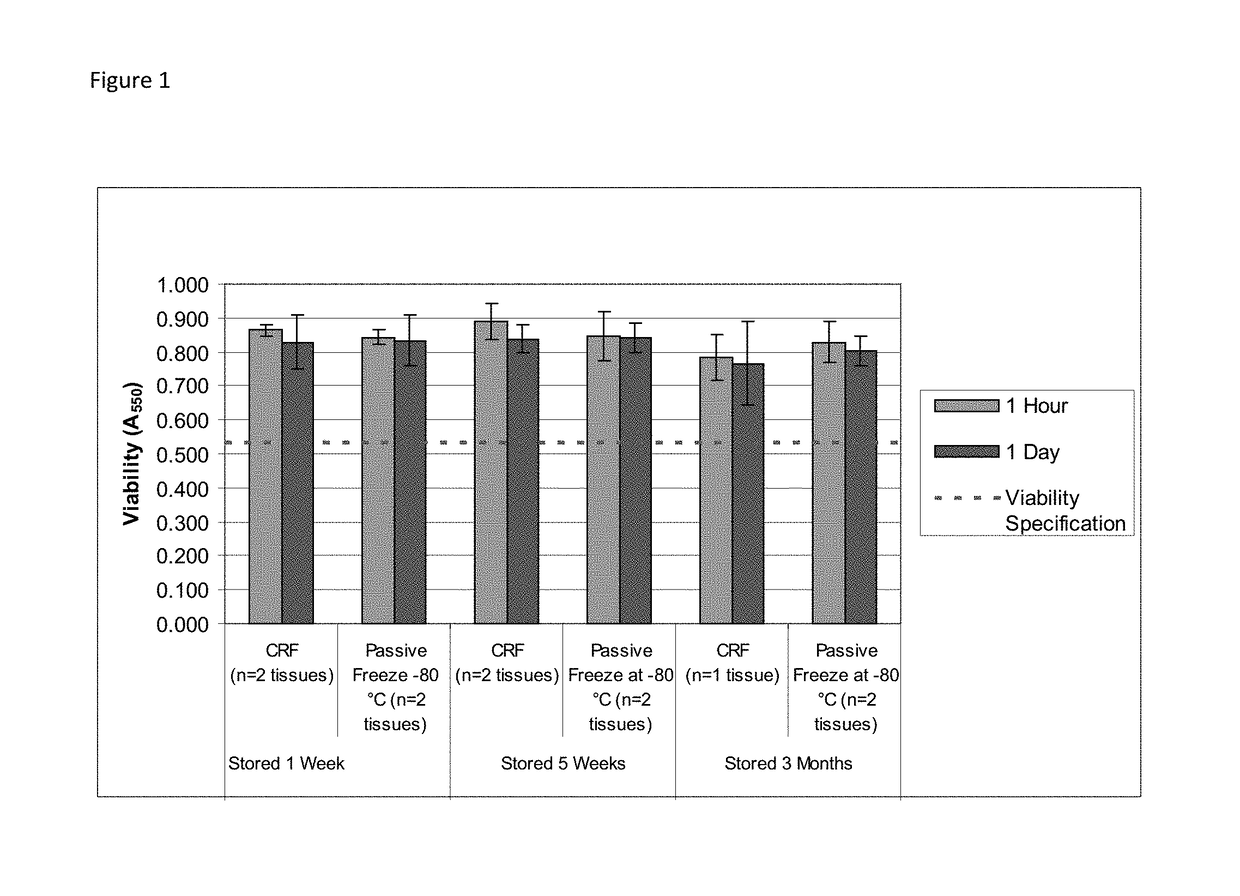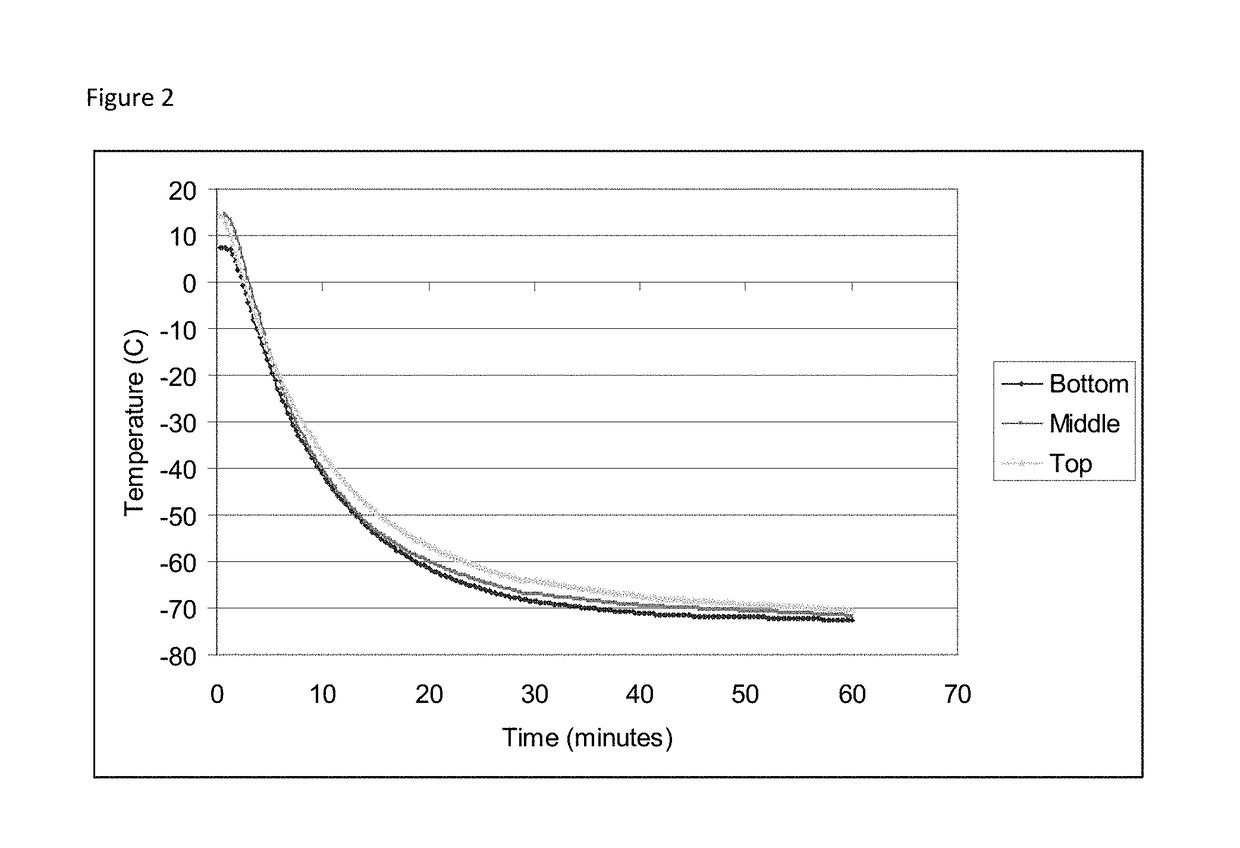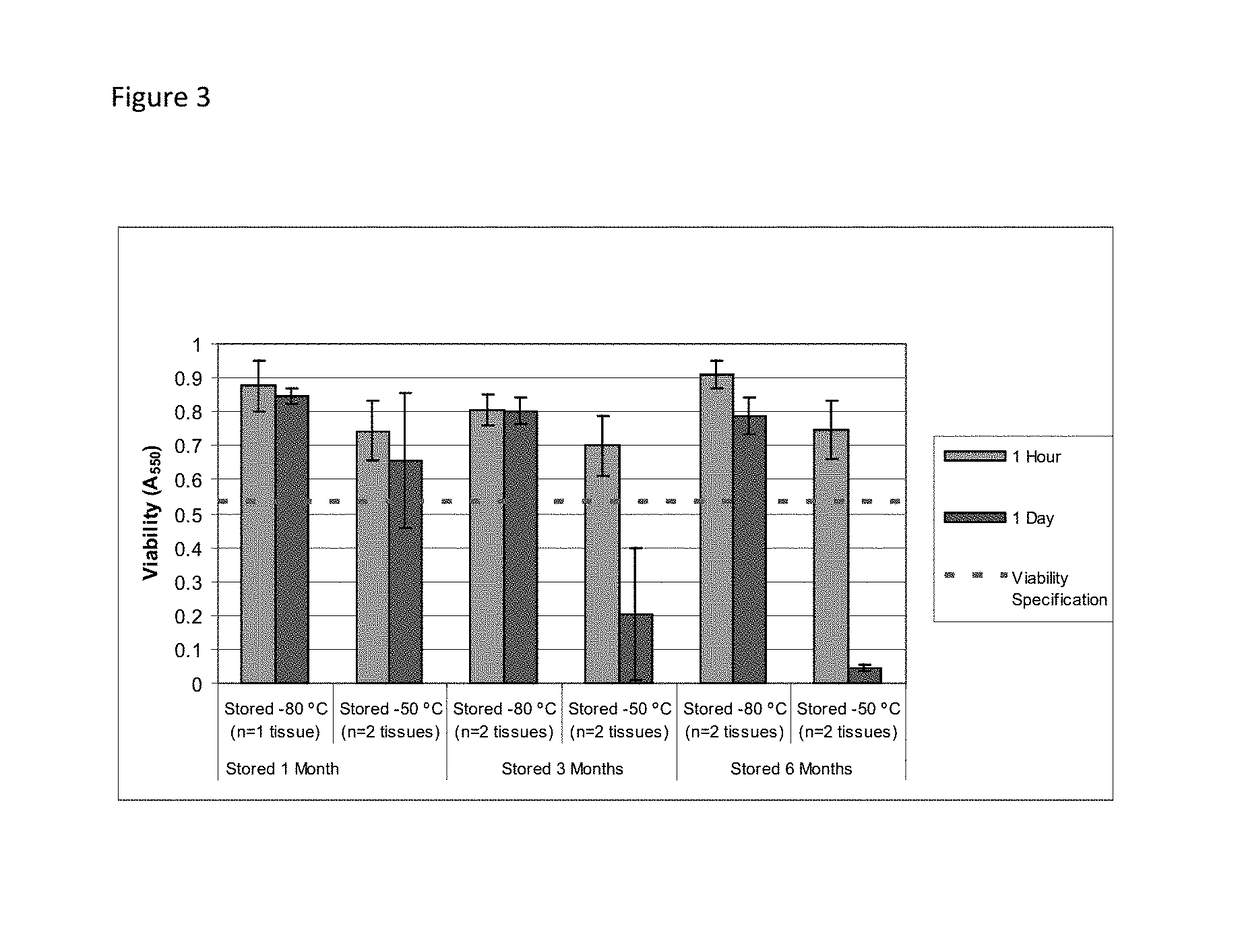Cryopreservation of viable human skin substitutes
a technology of human skin substitutes and cryopreservation methods, which is applied in the field of cryopreservation of viable human skin substitutes, can solve the problems of inability to realize the full economic potential of the industry, lack of effective and efficient preservation and storage of engineered tissues, and difficulty in long-term storage developmen
- Summary
- Abstract
- Description
- Claims
- Application Information
AI Technical Summary
Benefits of technology
Problems solved by technology
Method used
Image
Examples
example 1
[0062]StrataGraft® skin tissue is a living, full-thickness, allogeneic human skin substitute that reproduces many of the structural and biological properties of normal human skin. StrataGraft® skin tissue contains both a viable, fully-stratified epidermal layer derived from NIKS® cells, which are a consistent and well-characterized source of pathogen-free human keratinocyte progenitors, and a dermal layer containing normal human dermal fibroblasts (NHDF) embedded in a collagen-rich matrix. StrataGraft® skin tissue possesses excellent tensile strength and handling characteristics that enable it to be meshed, stapled, and sutured similarly to human skin grafts. StrataGraft® also exhibits barrier function comparable to that of intact human skin and is capable of delivering bioactive molecules for wound bed conditioning and tissue regeneration. The physical and biological characteristics of StrataGraft skin tissue make it ideal for the treatment of a variety of skin wounds.
[0063]The man...
example 2
[0064]This example describes improved cryopreservation methods for human skin equivalents. The production process is unchanged from the current method described above. All tissues in the lot are fed with fresh medium and incubated overnight prior to cryopreservation. Prior to cryopreservation, media samples from all tissues in each lot are tested for sterility. The remaining tissues in each lot are cryopreserved as follows.
ParameterOperating RangeCryoprotectant formulation50% (v / v) glycerolDMEM (1X)10 mM HEPES (pH 7.0 to 7.4)Pre-freeze cryoprotectant incubation2-8° C.temperaturePre-freeze cryoprotectant20-30 minutesincubation timeFreeze methodDirect transfer to −80° C. freezerStorage temperature−70 to −90° C.Shipping conditionsOvernight delivery on dry ice
Cryopreservation Process Description
[0065]All steps of the cryopreservation process prior to the final product packaging step are performed aseptically inside a Class 100 biosafety cabinet in a Class 10,000 cleanroom.
[0066]Step 1—P...
example 3
[0109]This example describes improved cryopreservation methods for human skin equivalents utilizing a pre-freeze treatment step with cryopreservation solutions containing 32.5% or 50% glycerol at room temperature. The production process is unchanged from the current method described previously. At the end of the production process, the tissues are treated and cryopreserved as follows.
ParameterOperating RangeCryoprotectant formulation32.5% (v / v) glycerolDMEM (1X)10 mM HEPES (pH 7.0 to 7.4)or50% (v / v) glycerolDMEM (1X)10 mM HEPES (pH 7.0 to 7.4)Pre-freeze cryoprotectant incubationRoom temperaturetemperaturePre-freeze cryoprotectant15-45 minutesincubation timeFreeze methodDirect transfer to −80° C. freezerStorage temperature−70 to −90° C.Shipping conditionsOvernight delivery on dry ice
Cryopreservation Process Description
[0110]All steps of the cryopreservation process prior to the final product packaging step are performed aseptically inside a Class 100 biosafety cabinet in a Class 10,0...
PUM
 Login to View More
Login to View More Abstract
Description
Claims
Application Information
 Login to View More
Login to View More - R&D
- Intellectual Property
- Life Sciences
- Materials
- Tech Scout
- Unparalleled Data Quality
- Higher Quality Content
- 60% Fewer Hallucinations
Browse by: Latest US Patents, China's latest patents, Technical Efficacy Thesaurus, Application Domain, Technology Topic, Popular Technical Reports.
© 2025 PatSnap. All rights reserved.Legal|Privacy policy|Modern Slavery Act Transparency Statement|Sitemap|About US| Contact US: help@patsnap.com



